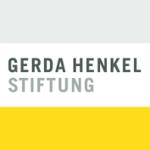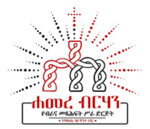Reviving Skills and Heritage of Ethiopian Master Manuscript Painters
The Way of Hezq'el
A project funded by the Gerda Henkel Foundation's Patrimonies Funding Initiative
Go to the Amharic version of this page.
Tradition and heritage, which Ethiopia is both proud and protective of, are crucial to its survival.
Our inspiration are two 18th century manuscripts from the British Library (Or. 790 and Or. 791) that contain an unprecedented 729 miniatures depicting the New and Old Testaments. A single colophon in each of the volumes reveals the artist whose workshop was responsible for this work to have been one Hezq’el.

Hezq’el’s legacy displays a rich and consistent vocabulary of line, form, symbol, composition, brush stroke and colour. While the two volumes were properly bound, and the text scribed in its entirety, for reasons unknown to us, just under half of the miniatures were left unpainted. That is to say that these were left only as monochrome line drawings over which the paint was then to be applied. Another 39 were left only partially painted. We might lament the loss of what these miniatures would have looked like in their full glory. Yet, at the same time, we have been given a unique insight into Hezq’el’s technical and creative processes of work and thought.
Our team will be working to analyse Hezq’el’s way of work. We will bring this knowledge into play in a number of ways, the two most important of which are: 1) to revive these artistic practices through the creation of teaching materials and run courses in the Hamere Berhan’s traditional school of Ethiopian Orthodox manuscript painting, and 2) The production of a volume in which all we have learnt about Hezq’el’s art and these manuscripts more generally.
Heritage is not just material that needs conservation and recording; we believe, also, in the significance of living forms of it. We want to contribute to the effort to make sure that the intangible heritage is alive, revivified and sustained and will assure Ethiopia’s museums of tomorrow will be furnished with the work of those who own, practice and pass it on in both tangible and intangible forms, as objects as well as living and dynamic creative forms of practice. After all, a people are defined by what they do as much as by what they did.
The Team
| Tinsae Tesfamicheal Hailu Gellila Asmamaw Hamere Berhan Institute Addis Ababa Ethiopia | Gebreyesus Asmare Haile Maryam Mamo Street Sub City, Arada Addis Ababa Ethiopia | Dr. Getaneh Alemu Solent University Library Prof. Dr. Dan Levene Fellow of the CAS MagEIA, University of Würzburg Southampton United Kingdom and Germany |









